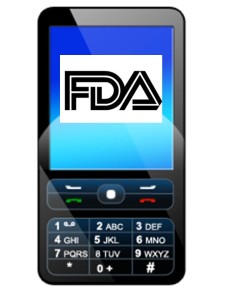 The FDA has spoken: there are 2 statutory definitions for a mobile health tool as a “medical device” that the Agency says it has regulatory oversight:
The FDA has spoken: there are 2 statutory definitions for a mobile health tool as a “medical device” that the Agency says it has regulatory oversight:
- To be used as an accessory to a regulated medical device, or
- To transform a mobile platform into a regulated medical device.
On page 8 of the Guidance for Industry and Food and Drug Administration Staff, you can read the FDA’s expanded definition of a mobile health app as being:
“…intended for use in performing a medical device function (i.e. for diagnosis of disease or other conditions, or the cure, mitigation, treatment, or prevention of disease) it is a medical device, regardless of the platform on which it is run.”
Further on in the document on page 11, the FDA says that licensed practitioners (namely physicians, dentists, and optometrists) who manufacture a mobile medical app or alter an app solely for use in their professional practice and do not label or promote the app to be used by other licensed practitioners or individuals would NOT be subject to FDA regulation.
The two bullet points above seem straightforward as far as they go. The Guidance discussed mobile apps that are the focus of regulatory oversight, such as mobile devices that are:
- Extend a medical device by connecting to the device to control, display, store, analyze, or transmit medical device data
- Transform the mobile platform into a regulated medical device using attachments, display screens, or sensors, or include functionalities similar to shoe of regulated medical devices
- Perform patient-specific analysis and provide patient-specific diagnosis or treatment recommendations.
The next part of the Guidance talks about areas where the FDA “intends to exercise enforcement direction” – which they say means they do not intend to enforce requirements under the Food Drug & Cosmetics Act: mobile apps that (with this author’s red bold-face pointing to gray areas):
- Help patients self-manage their condition without providing treatment or treatment suggestions
- Provide patients with simple tools to organize and track their health information
- Provide easy access to information related to patients’ health conditions or treatments
- Help patients document, show, or communicate potential medical conditions to health care providers
- Automate simple tasks for health care providers
- Enable patients or providers to interact with Personal Health Record or Electronic Health Record Systems.
Health Populi’s Hot Points: Word: be careful and remember that god is in the details. Be wary of headlines from trade press like FDA exempts most mobile apps from scrutiny and FDA to Regulate Only ‘Small Subset’ of Mobile Medical Apps. Read the fine, finer, and finest print in the Guidance relative to what you’re developing.
In particular, if were working on a mobile health app, I’d carefully scrutinize the red bold-faced vagaries bulleted above. “Treatment suggestions,” “simple tools” and “tasks,” and what constitutes and “interaction” with an EHR or PHR – which could involve a clinical alert to either a provider, caregiver or patient – could raise a red flag to FDA regulators.
This Guidance is most welcome and is, for the most part, clear. But as risk management is a high priority at Health Populi – Caveat Developer.




 Thank you FeedSpot for
Thank you FeedSpot for